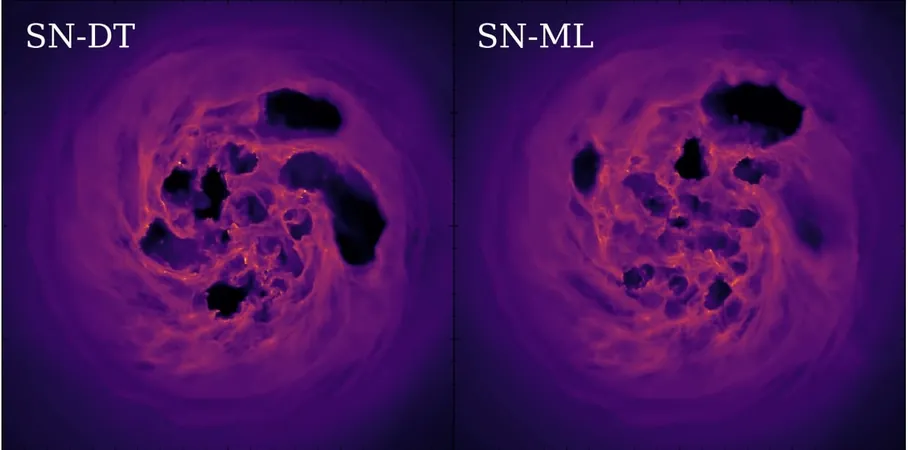
New Study Reveals Critical Gaps in MASLD-Related HCC Diagnosis: Are Patients Being Left Behind?
2024-11-05
Author: Rajesh
Recent research has uncovered alarming limitations in current clinical pathways, focusing on patients with metabolic dysfunction-associated steatotic liver disease (MASLD) that leads to hepatocellular carcinoma (HCC) without cirrhosis. Shockingly, over 25% of these patients present with a low fibrosis-4 index (FIB-4) score, yet existing care protocols may not adequately detect them for further evaluations.
MASLD encompasses a range of liver conditions, from simple steatosis to severe metabolic dysfunction-associated steatohepatitis (MASH), the latter being the fastest-growing cause of HCC globally. Medical guidelines, including recommendations from prominent associations like the American Gastroenterology Association (AGA) and the American Association for the Study of Liver Diseases (AASLD), typically advocate using the FIB-4 score to stratify risk among patients suffering from MASLD. They suggest that those with a FIB-4 score of 1.3 or higher should undergo additional risk assessment.
However, the intricate details of this latest study conducted by a team led by Darren Jun Hao Tan from the Yong Loo Lin School of Medicine at the National University of Singapore shed light on a concerning oversight. Researchers pointed out that it remains unclear how many people with MASLD-related HCC possess a low FIB-4 score (less than 1.3 or less than 2.0 for patients older than 65), which puts them at serious risk of being overlooked in treatment pathways designed by the AGA and AASLD.
To clarify this issue, Tan and his team carried out a multicentre cohort study over a span of time from January 2008 to August 2023, collecting data from seven international healthcare facilities located across Singapore, India, Australia, Japan, South Korea, and the United States. Their rigorous study criteria focused on adults diagnosed with MASLD-related HCC while strictly excluding other causes of liver disease, including viral hepatitis and alcohol-related conditions.
Key Findings of the Study: The study evaluated a total of 615 participants, with an average age of 71 years and an average body mass index (BMI) of 27 kg/m². Among these individuals, 38% lacked any known cirrhosis diagnosis, and the average median FIB-4 score was 3.90. Alarmingly, 26% of the participants without cirrhosis had a low FIB-4 score.
Interestingly, the researchers discovered that those with a low FIB-4 score had significantly lower serum alpha-fetoprotein (AFP) levels and larger tumor sizes compared to their counterparts. The study suggested that while cirrhosis was associated with a reduced likelihood of having a low FIB-4 score, other factors such as type 2 diabetes, male sex, and obesity had no significant impact.
The implications of this research are profound. With the ever-increasing incidence of MASLD and its complications, it is crucial that the medical community reevaluates current pathways to ensure that at-risk populations are effectively identified and treated. Patients may unknowingly be at risk of progression to HCC without proper monitoring and intervention. As healthcare evolves, ensuring inclusivity in diagnostic criteria could be vital for reducing the burden of this debilitating disease.
In light of these findings, healthcare providers must remain vigilant—are they doing enough to protect patients at risk of MASLD-related HCC? The time to act is now, and patient advocacy may play a key role in pushing for revised guidelines that ensure comprehensive care for all individuals grappling with this condition.


 Brasil (PT)
Brasil (PT)
 Canada (EN)
Canada (EN)
 Chile (ES)
Chile (ES)
 Česko (CS)
Česko (CS)
 대한민국 (KO)
대한민국 (KO)
 España (ES)
España (ES)
 France (FR)
France (FR)
 Hong Kong (EN)
Hong Kong (EN)
 Italia (IT)
Italia (IT)
 日本 (JA)
日本 (JA)
 Magyarország (HU)
Magyarország (HU)
 Norge (NO)
Norge (NO)
 Polska (PL)
Polska (PL)
 Schweiz (DE)
Schweiz (DE)
 Singapore (EN)
Singapore (EN)
 Sverige (SV)
Sverige (SV)
 Suomi (FI)
Suomi (FI)
 Türkiye (TR)
Türkiye (TR)
 الإمارات العربية المتحدة (AR)
الإمارات العربية المتحدة (AR)